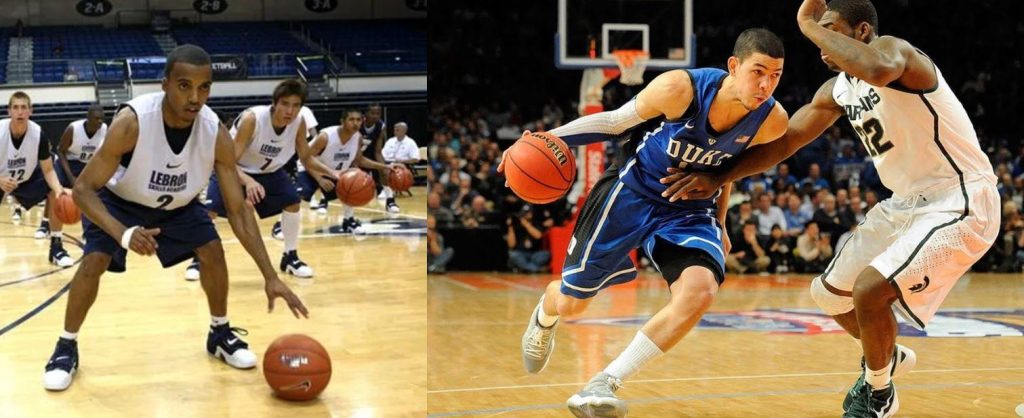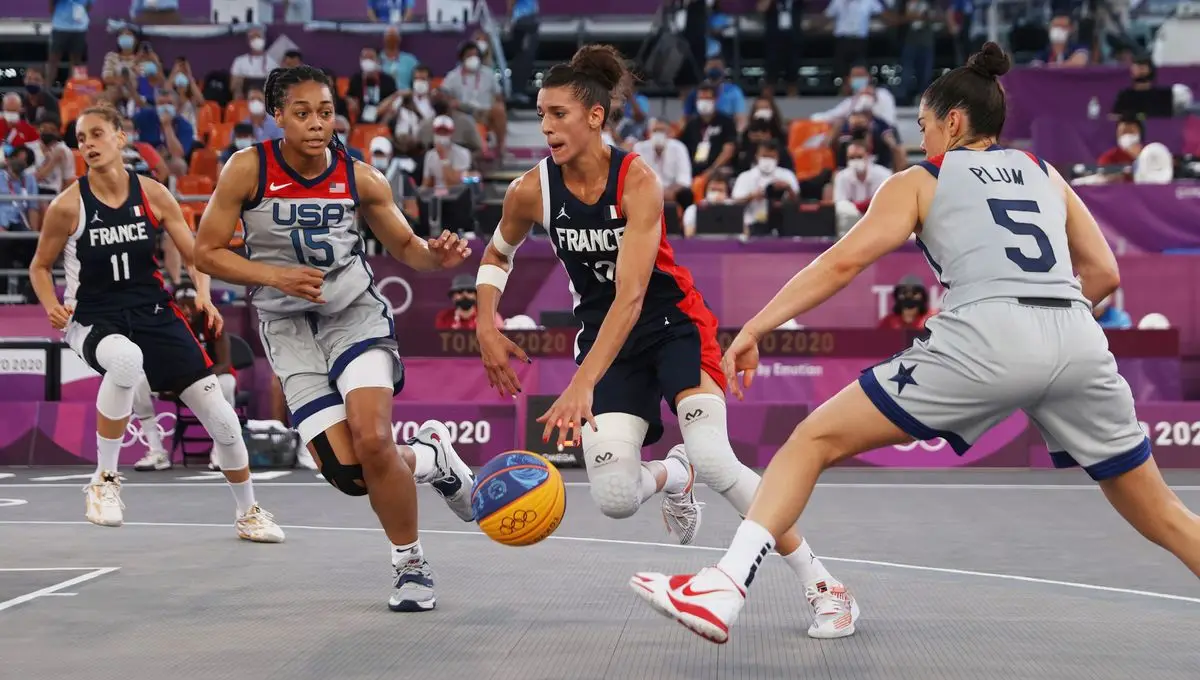Dribbling in basketball is not just ball-handling technique, but a fundamental action on which the entire dynamics of the game are built. The effectiveness of attacks, confidence on the court, and freedom of movement depend on the ability to control the ball. Mastering this skill provides flexibility in decision-making — from individual drives to precise passes to teammates.
What Is Dribbling in Basketball?
Dribbling in basketball is a series of ball bounces on the court with controlled rebounds, performed with one hand. The goal is to move across the court without violating the rules, creating space between the player and the defender, and preparing for a shot, pass, or fake. It is especially important to maintain balance and feel the direction of movement, as any imbalance leads to loss of possession.

The contact of the palm with the ball occurs through the fingertips, without applying pressure with the entire hand. The rebound should be predictable — the lower the ball, the quicker the reaction. Professional dribbling is based not only on motor skills but also on the ability to “read” the game, anticipating the opponent’s actions.
Control and Stability
 Control of the ball in basketball plays a key role in the technique. It is ensured by the correct stance, where the knees are slightly bent, the torso is leaning forward, and the head is raised for visibility. The body should be toned — from fingers to toes. The hands act synchronously to change direction instantly. Balance is crucial: loss of stability leads to turnovers.
Control of the ball in basketball plays a key role in the technique. It is ensured by the correct stance, where the knees are slightly bent, the torso is leaning forward, and the head is raised for visibility. The body should be toned — from fingers to toes. The hands act synchronously to change direction instantly. Balance is crucial: loss of stability leads to turnovers.
Dribbling in basketball is also a test of physical endurance. When dribbling, a player engages the wrist, forearm, shoulder, and even back muscles, as the constant rhythm requires effort and concentration.
Ball Handling Technique in Basketball
Ball handling technique includes several key aspects. Firstly, the ball bounces within the comfort zone — not above the waist. Secondly, the wrist controls the direction and force of the bounce. The speed and variability of handling depend on preparation: an experienced player can quickly switch between hands, stop abruptly, and change the trajectory of movement. Among the most common types of dribbling are:
- low dribble — used under tight defense to protect against steals;
- speed dribble — necessary for fast movement across the court;
- crossover — changing hands and direction to bypass the opponent;
- spin move — rotating the body to gain an advantage in tight defense.
Each type requires precise movements and a sense of rhythm and reaction to defenders’ actions.
Main Objectives of Dribbling in Gameplay
Dribbling in basketball is not an end in itself but a means to build an attack. Through dribbling, a player can enter the key area, create scoring opportunities, or disrupt the opponent’s defensive scheme. Often, maneuvering becomes part of a combination where changes in speed, direction, and pauses deceive the opponent.
Dribbling also allows players to buy time while teammates position themselves. It is important not to overuse it — excessive pressure can lead to mistakes.
Rules of Dribbling in Basketball Every Player Should Know
There are clear rules that, if violated, lead to turnovers:
- you cannot hold the ball with two hands simultaneously while dribbling;
- after stopping and holding the ball, you cannot resume dribbling;
- the palm should not be under the ball during the bounce;
- intentionally knocking the ball out of the opponent’s hands while dribbling is prohibited.
Dribbling in basketball is a process where every mistake can result in a turnover. Therefore, knowledge of the rules and automation of technique play a crucial role!
Key Elements of Movement While Dribbling
Each movement is based on proper body mechanics. Foot positioning determines the trajectory, knees cushion the impact, and the torso provides balance. The wrist performs precise work — regulating the height and rhythm of the bounce while maintaining control.
Dribbling in basketball requires continuous coordination. Players must assess the situation on the court, react to the defender’s actions, and adapt their steps. Even a slight delay leads to a loss of pace.
Common Mistakes Made by Beginners
Many beginners face a number of typical problems, including:
- excessive bounce height, leading to reduced control;
- using the entire palm instead of just the fingers;
- weak contact with the floor, causing the ball to “live its own life”;
- excessive focus on the ball instead of scanning the court;
- immobile legs, hindering the ability to change direction.
Such mistakes hinder learning and increase the number of turnovers in the game.
Dribbling in Basketball Is the Key to Player Flexibility
A player’s progress is directly related to how well they have mastered dribbling. Dribbling in basketball is a universal skill applicable to all positions. Centers use it less frequently, but for point guards and forwards, it is critically important.
Refined technique enables the development of intuition and tactical thinking — the ball in reliable hands becomes an extension of the body. In this case, the player freely combines dribbling with passing, shooting, and deception.
Impact of Ball Maneuvering on Tactics and Team Play
Dribbling in basketball is not just an individual move. It lays the foundation for team interactions. The ability to move with the ball and strategically place emphasis on movement affects the synchronicity of the entire team. An open space created through precise dribbling becomes an opportunity for team attacks.
Moreover, dribbling allows breaking the opponent’s zone defense or attracting multiple defenders, thereby opening up passing opportunities. Tactical flexibility begins with proper dribbling.

Conclusion
 Dribbling in basketball is the foundation on which the dynamics of the game, interaction, and individual mastery are built. It requires precision, strength, control, and, most importantly, continuous development. Without confident ball handling, it becomes a burden rather than a tool for attack.
Dribbling in basketball is the foundation on which the dynamics of the game, interaction, and individual mastery are built. It requires precision, strength, control, and, most importantly, continuous development. Without confident ball handling, it becomes a burden rather than a tool for attack.
Mastering this skill opens the way to new levels of play, where movements become deliberate, and the results are predictable!
 en
en  de
de  ar
ar  es
es  hi
hi  fr
fr  nl
nl  it
it  pt
pt  el
el 










